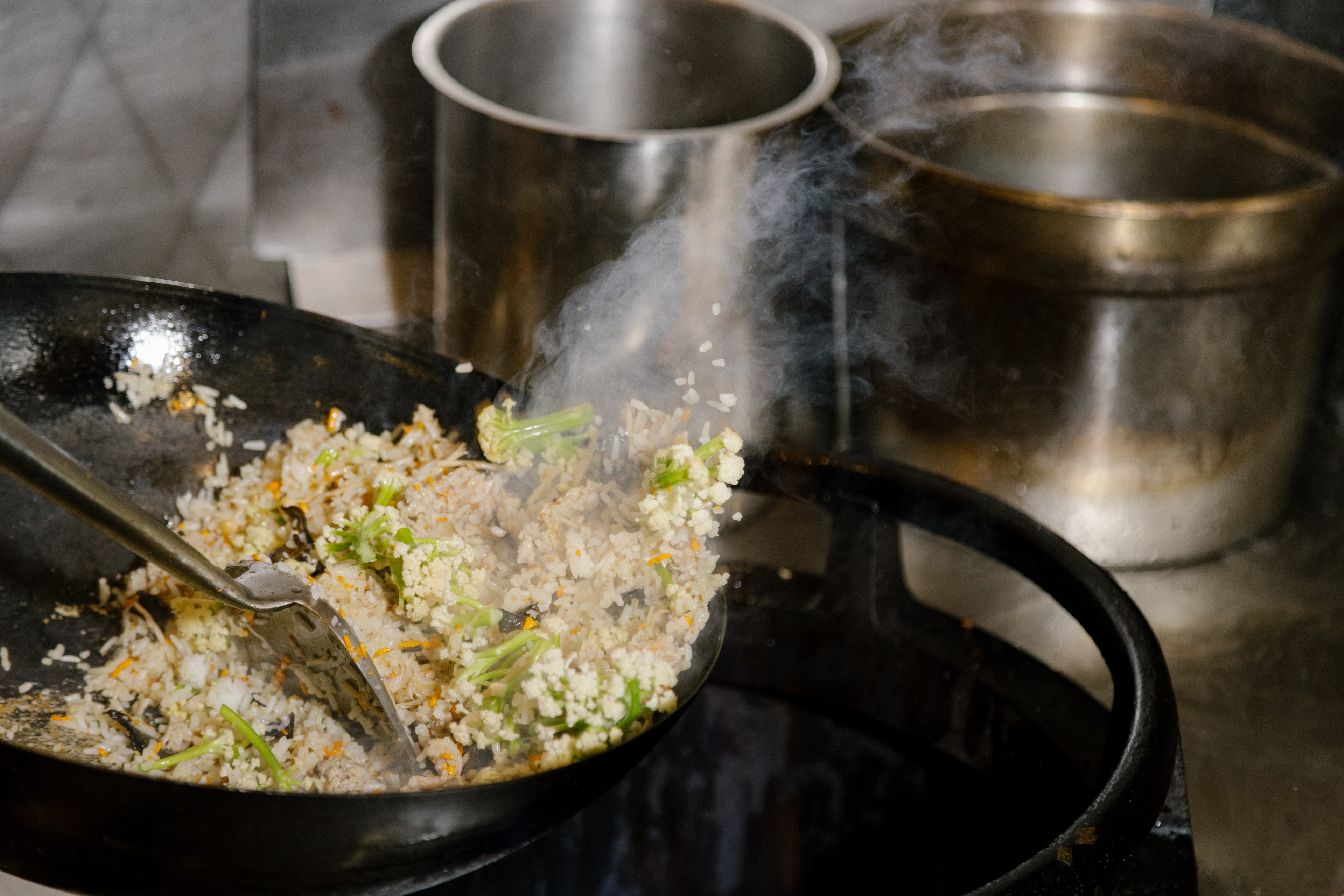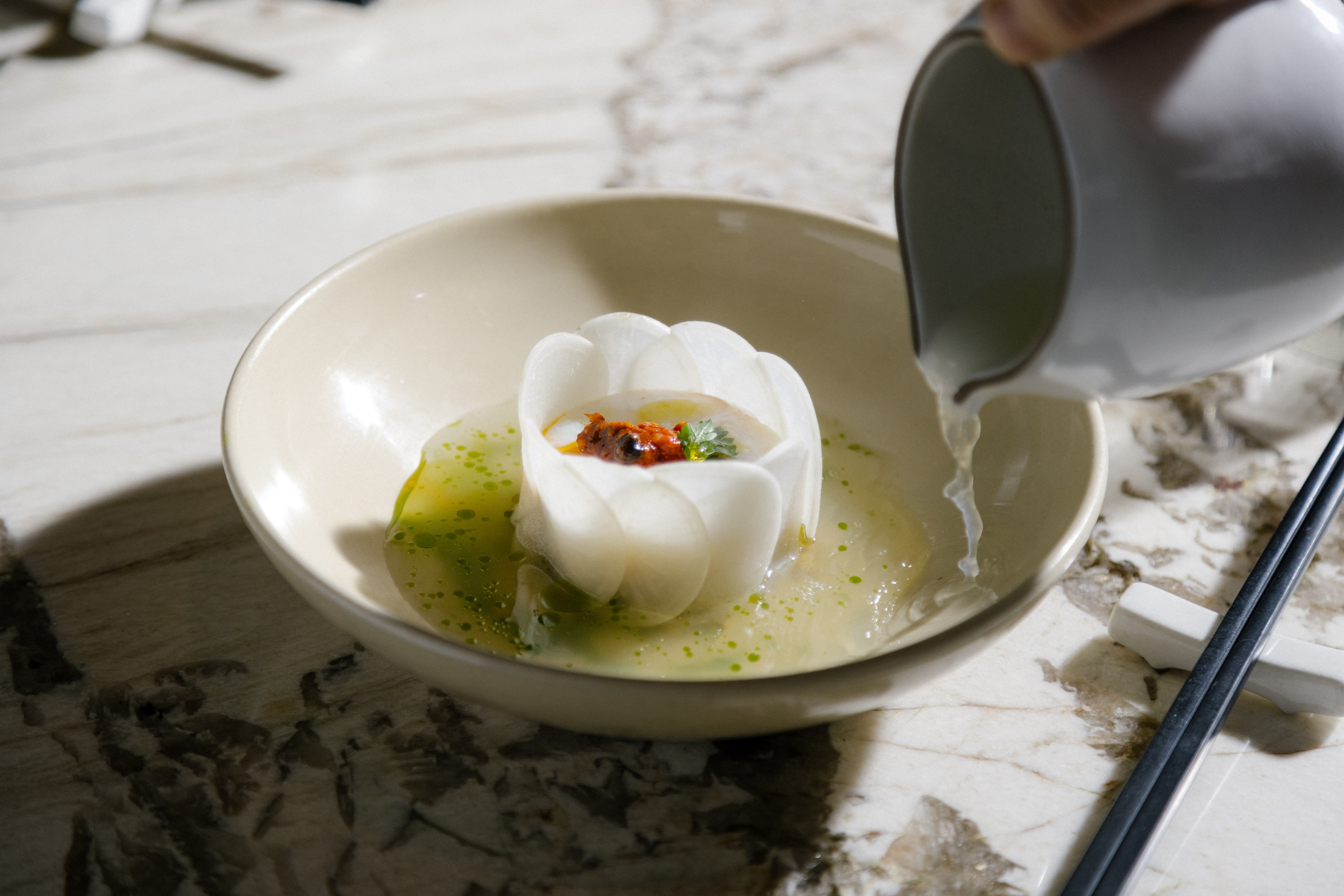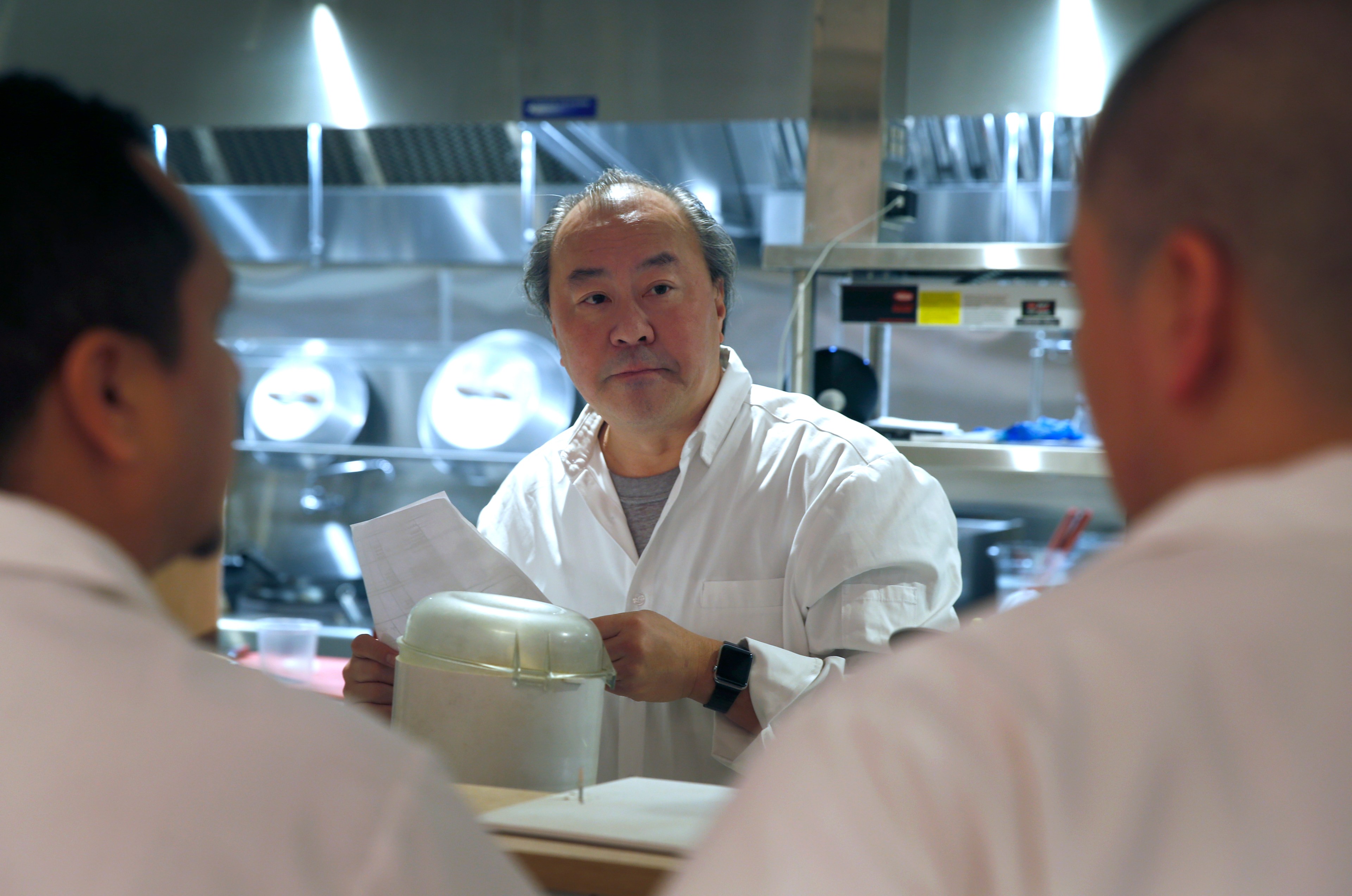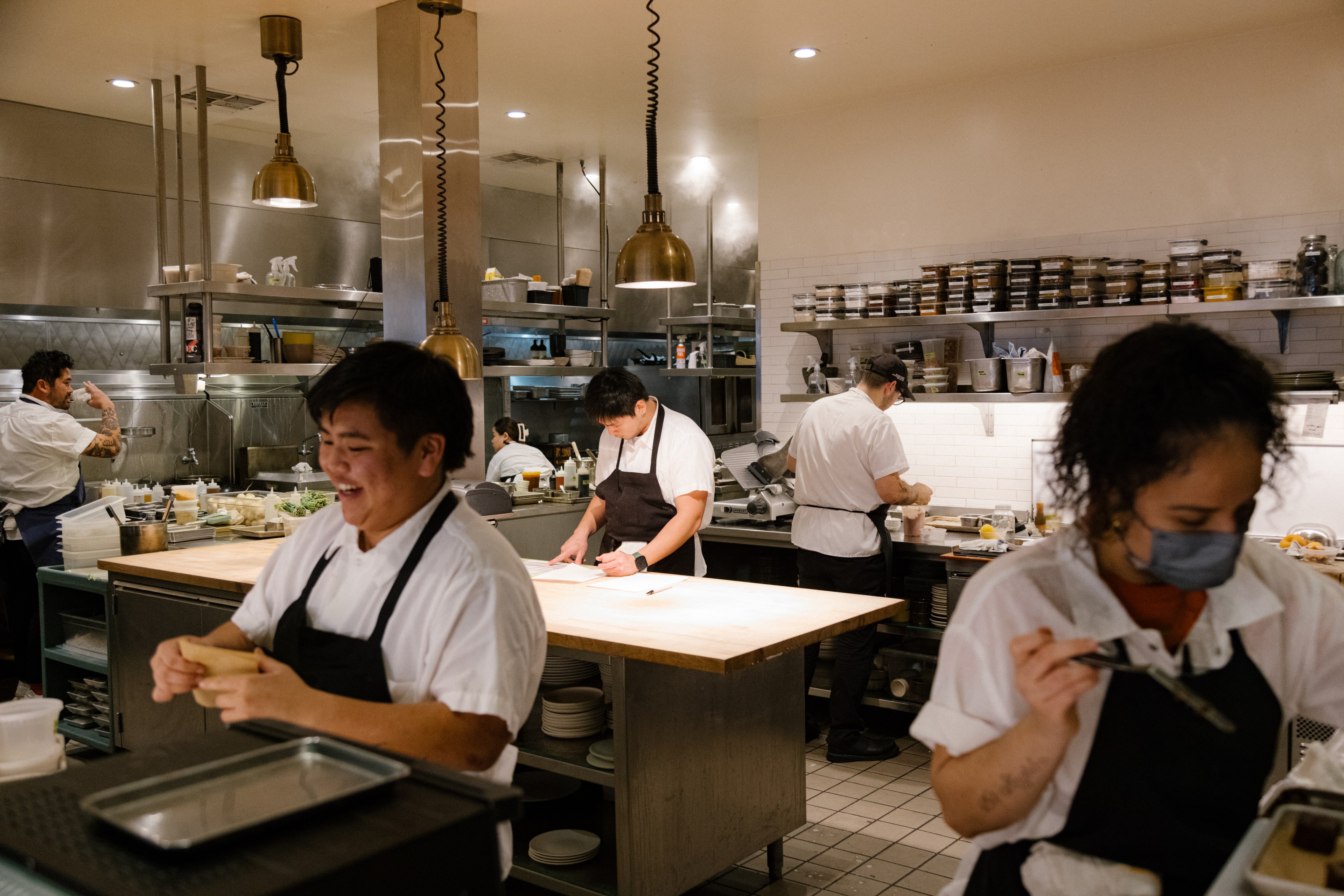Chef Brandon Jew’s restaurant occupies a lonely position among all the top-tier establishments in America.
Nationwide, among the 231 restaurants awarded one, two or three Michelin stars this year, Mister Jiu’s, Jew’s fine-dining business in San Francisco’s Chinatown, is the only one categorized as Chinese food. Adding salt to that wound, other Asian cuisines are winning big, including 49 Japanese restaurants and 13 Korean restaurants across the country receiving Michelin stars.
“It makes me sad,” Jew said. “There’s a lot of misunderstanding about Chinese cuisine.”
Labeled as a “love letter to America’s oldest Chinatown,” Mister Jiu’s is among the flashiest and most high-profile Chinese restaurants in San Francisco. A former banquet hall on Waverly Place, its kitchen serves contemporary Chinese American food, with innovative dishes like pickle sour fish “suan cai yu” (酸菜鱼) with pepperoncini.
In the Michelin system, initially conceived by the French tire company to assist travelers in finding meals on the road, Mister Jiu’s one-star rating indicates “high-quality cooking.” The two-star (“excellent”) rating is given to restaurants that are worth a detour and three-star (“exceptional”), the highest honor, means the places have become destinations in their own right, worthy of a special trip.
Although the Michelin Guide faces alleged biases favoring Japanese and French food, it remains a globally recognized benchmark of quality and prestige. And while the guide recognizes hundreds of Chinese restaurants in mainland China, Hong Kong and Taiwan, Chinese establishments in the U.S. have yet to break its proverbial glass ceiling.
Sophisticated Cuisines
China is home to some of the most sophisticated cuisines in the world, honed over thousands of years of development. Flavors vary from region to region over the vast country, which has a land mass roughly the size of the United States.
The well-known eight major Chinese cuisines (八大菜系) refer to the culinary traditions from Hunan, Sichuan, Jiangsu, Zhejiang, Anhui, Shandong, Fujian and Guangdong provinces, with Guangdong being the birthplace of the Cantonese cooking that has long formed the backbone of American Chinese food. But dozens of other regional cuisines, such as the northwestern Shaanxi noodle or Beijing’s emperor-style dishes, stand apart from the eight major groupings.
Kathy Fang, a Food Network star and Chinese American chef in San Francisco, said even natives of China do not understand how complicated and diverse Chinese cuisine is.
“China has the famous eight regional cuisines, but those are not fully represented here [in America],” Fang told The Standard. “And even within those regional cuisines, there’s such a big separation between fine dining and casual food.”

Fang said that xiaolongbao (小笼包) is an illustrative example. The popular Chinese steamed pork and soup dumpling, which originated from around Shanghai, has many forms, with variations in the sweetness of the meat, the thickness of the skin and how tightly it wraps the dumpling’s contents.
Fang and Jew agreed that America’s limited exposure to the full range of Chinese cuisine and the fact that Chinese cuisine has not been comprehensively transplanted to America led to the country having fewer standout Chinese restaurants to compete for Michelin’s attention.
Martin Yan, a Chinese American icon who has signed off his PBS cooking series with the catchphrase “If Yan can cook, so can you!” for more than 40 years, believes the breadth and complexity of Chinese cuisine should make it stand out.
Yan noted that a famous Sichuan dish, mapo tofu (麻婆豆腐), may sound simple to prepare, but it’s difficult to make well, requiring not only specific ingredients like tender tofu, chili and numbing Sichuan peppercorns but also stir-fry technique that uses the proper heat.
“It’s a shame that Chinese cuisine hasn’t won more Michelin stars,” Yan told The Standard. “The Chinese menu is often big. It’s not a typical steakhouse.”
The Stereotype of the Cheap Meal

Aside from Chinese cuisines in China, Chinese food in America has become its own category, with many dishes that Chinese-born Chinese may have never heard of: General Tso’s chicken, Mongolian beef, egg foo young, chop suey and fortune cookies.
These Americanized Chinese dishes, no matter how popular they may be stateside, also have a lowbrow reputation that’s proven resistant to change.
“Chinese American food has 150 years of history and that history has put Chinese American food as cheap food,” Hanson Li, a prominent San Francisco restaurateur who has been involved with multiple Michelin-starred restaurants, told The Standard. “So that’s huge baggage.”
Li said that American Chinese food, with its large portions of inexpensive dishes in white to-go boxes, derives from many Chinese immigrants’ business model: serving the masses rather than expressing any complicated culinary ideas.
This “survival mode” makes it a poor fit for Michelin’s standards, as the guide tends to value expensive ingredients, fancy plating, small bites, extensive wine collections and first-class service.
Even so, Li said he’s a strong defender of American Chinese food, because it is a historic outcome of East meeting West with its own pedigree. Simply copying and pasting Chinese cuisine into the United States may not be a good business idea to appeal to general American diners—including Chinese Americans.
Jew said he started to realize how American his palate was when training in Shanghai; to him, American Chinese food is authentic, not Chinese food in China. He said if he is trying to make food that a mainland Chinese person would think authentic, then “how authentic would that be to myself?”

Jew also acknowledged that as a fine dining restaurateur, he struggled to challenge the “cheap meal” stereotype by setting a higher price for his Chinese food; even Chinese cuisine can use the same expensive ingredients as French or Mediterranean Michelin-starred restaurants.
For Li, restaurants are businesses, and opening Chinese restaurants, no matter if it’s casual or fine dining, is always a business decision.
“Is this country ready to pay more for good Chinese food?” Li asked.
Eight Tables Has Been Waiting
On a typical working day in November 2018, George Chen was expecting a call from Michelin to notify him that his Eight Tables, the most ambitious and extravagant Chinese fine dining restaurant in San Francisco’s Chinatown, had won one star or two. But his phone never rang.
“It was disappointing. My entire staff was crushed,” Chen, a Taiwanese-born celebrity chef who spent decades in the California culinary world, recalled. “I got over it in 48 hours, and we tried to get it the next year. Again, we didn’t get it.”

Eight Tables offers Chinese “private chateau cuisine” (私房菜) and one of its signature dishes, “jiu gong ge” (九宫格), brings diners the nine essential flavors of Chinese cuisine. The tasting menu costs $250 per person, not including beverages.
Five years later, Chen’s still waiting for recognition.
“To be honest with you, does Eight Tables deserve a star? Absolutely,” Chen said. “But they don’t want to give it to me. There’s nothing I can do about it.”
Eight Tables has garnered much media attention and won some highly coveted honors, including being listed in the world’s top restaurants as selected by La Liste. But being passed over by the Michelin Guide is something that Chen has never let go of. He has also publicly accused its clandestine operatives of being biased against Chinese cuisine.
“Culturally, it hurts,” Chen told The Standard, “for our great culture and cuisine not to be recognized in that way.”
But the guide keeps its process and criteria tightly wrapped and never says why certain restaurants did not win.
The Standard reached out to Michelin for comment but did not receive a response.
What Kinds of Asian Food Does Michelin Like?

The Michelin Guide is no stranger to Asian food, rating restaurants in Tokyo, Shanghai, Hong Kong and Singapore. The guide has long been considered Japanese-centric.
For example, Japanese sushi and omakase restaurants, those darlings of the Western fine-dining world, have 49 winners in the U.S. this year.
The list of Chinese restaurants in America that have ever received a Michelin star is short.
More than a decade ago, Wing Lei in Las Vegas was North America’s first Chinese restaurant to receive the designation. Café China in New York had a long run of star fame until 2019, and Bistro Na’s, a Southern California restaurant specializing in Manchurian royal cuisine also had a single star before.
London’s A. Wong was the first Chinese restaurant outside of Asia to win two stars. And in Asia, where the competition in Chinese cuisine is a totally different game, Hong Kong’s Lung Keen Heen was the first three-star Chinese restaurant in the world.
Fang and Yan both said that Michelin’s judging process should evolve to be more diverse and inclusive of Chinese cuisine.
“If you don’t understand the cuisine, how can you judge it?” Yan said.
Fang said har gow, the famous dim sum dish shrimp dumpling, can be a very nice fine dining item, for example, but Michelin needs to find people who deeply know about it. She said when a dim sum expert uses chopsticks to pick up the dumpling, they can tell if the dumpling skin is done well without eating by examining how translucent it is. When they bite it, the best shrimp should be a little bit chewy while still smooth without being sticky, Fang said.
“In Michelin world, you need to find people who can actually understand things like that and then be able to judge,” Fang said.
Korean cuisine also has 13 winning restaurants in the U.S., including San Ho Won, a relatively new Korean barbecue place in San Francisco. A handful of American winners are listed as “Asian” and “Asian Contemporary,” meaning they may incorporate Chinese cuisine’s influence, including San Francisco’s Benu and Los Angeles’ Kato. Thai cuisine has two winning restaurants, Nari and Kin Khao, both in San Francisco.
A Generation’s Effort To Elevate Chinese Cuisine

For Chinese chefs, winning Michelin’s recognition may be a generation-long effort.
“For me, it’s been a lifelong mission to elevate Chinese food,” Chen told The Standard.
Chen said his Eight Tables is the modern interpretation of Chinese cuisine using Bay Area’s ingredients, and some of his dishes, like the relatively obscure clay pot soup “wa guan tang” (瓦罐汤) from Jiangxi province, can serve as a cultural bridge for the American public to better understand the diversity of Chinese food.
Fang also said a decade ago, American corporations may never have thought of holding a company Christmas party or other events at a Chinese restaurant because of the cheap meal stereotype. But now, her Fang restaurant hosts cool parties, and that has started to change how people think about Chinese restaurants.
She suggested that Chinese chefs in America who want to win Michelin stars by cooking Chinese food go to China, learn the best of the best in each regional cuisine and bring them back to the states.
Li, who’s not a chef but a restaurateur, said the Chinese American chef can learn from Asia when it comes to Michelin stars. He said there are more than a hundred Chinese restaurants with Michelin fame in Asia, and he thought most of them have deep roots in Chinese traditional techniques and ingredients but present the food with an innovative and sophisticated twist.
“It’s not fusion, necessarily,” Li said, “but advancing what Chinese cuisine is.”
Consequently, Li is also helping the restaurant reservation platform OpenTable and Gold House, an Asian American nonprofit, to launch the “Gold Chef Prize” that will put a spotlight on Asian chefs.
For his part, as the only star holder of Chinese cuisine in America now, Jew has a few wishes, too.
“I don’t know if, in my lifetime, there would be a proliferation of stars given to Chinese restaurants,” Jew said. “But that’s some of my motivation for continuing to be in my kitchen every night.”
Source : SF Standard















